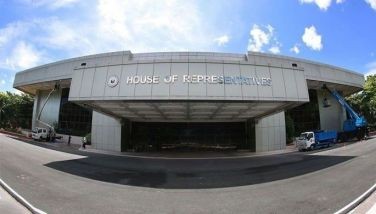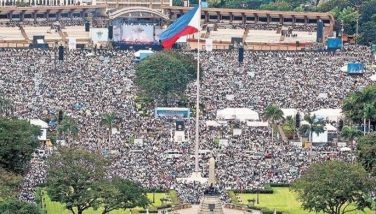K TO 12: Producing uneducated Filipinos
CEBU, Philippines - I am both alarmed by the obstinacy of the Department of Education in ramming through its implementation of the K to 12 program and dismayed by the cryptic silence of educators, parents and students alike who stand to be most affected by this ill-advised and ill-timed initiative.
The full implementation of the program will be in 2016, which is just a little over a year from now. If the Filipino people do not rise up to vigorously oppose this program, they will wake up one morning in the very near future having to grapple with the burden of two more years of unnecessary education.
The K to 12 program adds a kindergarten and two years to basic education. Kindergarten has already been added to the curriculum. The two more years of high school will be implemented starting in 2016. This means that those already in third year high school today will not graduate from fourth year in 2016 but will have to take two more years of senior high before they can go to college.
Consequently, because those who ought to go to college in 2016 will not do so but will still take up two more years of senior high, there will be no college enrollees for two years. The severity of the economic impact of this hiatus on colleges and universities will be matched only by the enormous financial burden on teaching and non-teaching personnel who will have to be laid off because they will have nothing to do in those two years.
Juggling of jobs is not as easy as it may seem. College teachers cannot simply be thrown into jobs teaching high school students because they lack the training and the credentials to do so.
The economic dislocation goes beyond the projected losses of colleges and universities and the loss of jobs to both college teaching and non-teaching personnel. An even more serious economic stranglehold will grip Filipino families whose education plans for their children will be severely displaced and dislocated by the unplanned two additional years of high school.
Two more years of unprojected schooling, at a time of escalating prices and soaring inflation, is the single most devastating burden that government can foist on the people it is supposed to help.
I am an educator. I am a believer in education. I believe all education is good. But education is not a simple matter of merely teaching. For education to be effective, it must be given under the right conditions, by competent educators using the right materials and equipment. Unfortunately, these are factors that the Department of Education has completely ignored.
In insisting on the K to 12 program, the Department of Education only had one consuming goal in mind -- to be at par with most of the countries in the world that have 12 years in their basic education curriculum. Such a single-minded approach is the hallmark of arrogance. It is evidence of a complete failure to understand the dynamics of their own responsibilities as policy makers of national education.
Just because a country may have 12 years of basic education does not necessarily mean it is better than countries that only have 10. The Philippines may not be the best country in the world, but its 10 years of basic education is definitely far superior than many others that have 12. On the other hand, it does not follow that even if the Philippines has 20 years of basic education it will be any better than others that only have 12.
To make any curriculum work, teaching must be given under conducive and optimum conditions. No better argument against K to 12 can be found other than that quality is always superior to quantity.
And that brings us to the crux of the matter which makes K to 12 the most detrimental educational initiative the government has imposed on its own people.Up to this time, the government has been unable to provide for the most basic requirements in the present 10-year basic education system. Classroom lack continues to plague the country, a situation made worse by recent natural calamities.
Qualified teachers remain in short supply. The quality of educational materials depends on the extent of corruption bugging the procurement system. To add two more years to an educational system hobbled by such long-standing problems is to cripple the system further instead of improving it.
Two more years of high school will drive away more students whose parents can no longer afford the added years that the K to 12 exacts. Two more years of high school will put an unbearable strain on government resources that are at present already under pressure to cope with the classroom lack, since it will have to build even more with money it does not have.
Here are the cold and hard facts that the Department of Education bigwigs chose to ignore and sweep under the rug. To accommodate 1,126,722 preschool pupils this schoolyear, a total of 45,068 teachers were required at 25 pupils per class. But how much was the department only able to afford? Only 29,000 teachers or not even half the requirement?For a 10-year basic education curriculum this schoolyear, a total of 66,800 classrooms were needed.
But how many did the government manage to build? Only 9,000. Not even a sixth of the requirement. Of the 101,612 teachers needed for the same schoolyear, only 10,000 were hired. Not even a tenth of the requirement. And yet the Department of Education has shown no sign of wavering in its quixotic quest. And worst, the fury of typhoon Yolanda heightened the many problems to be solved. Many school buildings cry for immediate attention and repair. As do the displaced homeless who still live in tents and makeshift huts.
At this point in time, instead of raising the standard of education to be at par with the rest of the world, the K to 12 program of the Department of Education will only help ensure that there will be fewer educated Filipinos in the future.
The department's own statistics show that of 100 children entering grade one, less than half ever make it past fourth year. Such a high mortality rate will only be exacerbated by the addition of two more years to high school.
Maybe when the Philippines reach a level of prosperity that is at par with some of its Asian neighbors like Japan and Singapore then a 12-year basic education curriculum will be a must. But at this point, two more years of basic education only mean two steps backward. They are taking us in the wrong direction.
If the Department of Education refuses to see the folly of its actions, then it is time the political leadership in this country, which I hope will be sensitive to the plight of the people, to step in to intervene. At this point of unpreparedness, I simply cannot see any way forward that the K to 12 program will take the Philippines.
Quo vadis, Philippines?Your K to 12 program is not taking you forward but backward. The road to the future is not more years but the quality of the years you have. It is the same with life itself. It is not how long you live but how meaningful the life you had. (BANAT NEWS)
- Latest





















